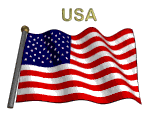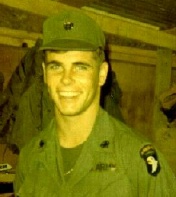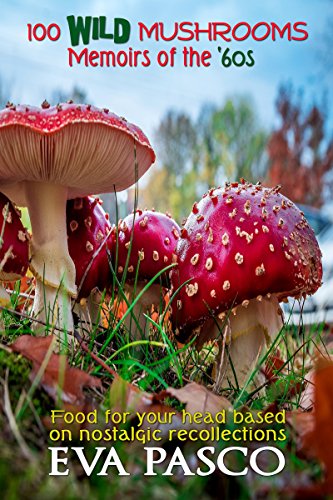
The 60s Official Site
"Where Music is Our Middle Name"
Quick Links
Your Daily Oldies Fix Top Ten Countdown Solid Gold Memories Jukebox Music
Vibration of a Nation Remember When Television of the 50s and 60s 60s Slang
Things You Just Don't Hear Anymore 60s TV Commercials Chickenman Episodes Woodstock This Weeks Number One Hits
The Early Years of Rock and Roll Vietnam War Myths
All the content menu is listed on the left menu border bar
Dance Crazes of the 60sThe 60s was a fun and a unique experience. You had to be there to understand. Just talk to any baby boomer who was an adolescent during the 60s and they will tell you how fun and how fortunate they were to grow up in the 1960s. School dances and the dance crazes during that period were something else. I couldn't even begin to write about or even talk about what dances are popular today. I guess I possess a generation gap. I am lost in the 60s and 70s. The first dance craze I remember was "The Stroll." Of course it came out in the 50s but its popularity was still present in the 60s. You could stroll to almost any slow song. The Diamonds made the song famous in January 1958 and is still played today at many parties and weddings. It was close to being the first line dance. Girls on one side and boys on the other and the line moved up as each couple would meet one at a time in the center at the beginning of the line and stroll to the music down the line between the others and take their place at the end of the line. The Twist was a rock and roll dance popular in the early 1960s named after the song that originated it, The Twist. It was the first major international rock and roll dance style in which the couples did not have to touch each other while dancing. The dance was first popularized by Chubby Checker in 1960 with a hit cover of the 1959 minor hit "The Twist" written by Hank Ballard. Checker's single became a smash hit, reaching #1 on the US charts. The song set a record, being the only single to reach #1 in two different chart runs (as it reached #1 in 1960, and then resurfaced, reaching #1 again in 1962). This has never happened again in rock history. Faced with explaining to the youthful audience how to do the dance, a member of Checker's entourage came up with the following description:"It's like putting out a cigarette with both feet, and wiping your bottom with a towel, to the beat of the music." In 1961, at the height of the Twist craze, patrons at New York's hot Peppermint Lounge on West 45th Street were twisting to the music of the house band, a local group from Jersey, Joey Dee and The Starliters. Their house song, "Peppermint Twist (Part 1)," became the number one song in the United States for three weeks in January 1962. We even had a Peppermint Lounge in Circleville, Ohio. Of course it wasn't as famous as the one in New York. The lounge closed after a short period of time. The Mashed
Potato is a dance
move which was a popular dance craze of 1962. It was danced to songs such as Dee Dee Sharp's Mashed Potato Time.
Also referred to as "mash potato" or "mashed potatoes", the move vaguely resembles that of the twist, by Sharp's
fellow Philadelphian, Chubby Checker. James Brown had two Mashed Potato-related chart hits, "(Do the) Mashed Potatoes" (1960; released under a pseudonym and "Mashed Potatoes U.S.A." in 1962. Brown also featured the dance prominently in his live performances during the 50s and 60s. The dance was also referred to in Connie Francis' 1962 hit "V-A-C-A-T-I-O-N" ("...we'll Mashed Potato to a jukebox tune..."), "Do You Love Me" by The Contours, "Harry the Harry Ape" a 1963 Top-20 pop and R&B novelty hit by Ray Stevens, and "Land of 1000 Dances", a song made popular by Wilson Pickett. The Monster Mash came out around the same time that the song "The mashed potatoes" was popular ... and it was a variation. In the mashed potatoes you "ground" your foot (as if grindiing a cigarette butt to put it out) while pulling it backwards then stepping on to the opposite foot to do the same thing ... simultaneously walking in place while swivelling foot. "Monster Mash" was a hit by Bobby "Boris" Pickett and the Crypt Kickers. The song was a hit twice, in 1962 and again in 1973. The difference with the monster mash was that you would hold arms in goulish positions while doing the mashing footwork. Keep in mind the 60s period of dancing was where we were all trying to imitate behaviors of people when dancing. We tried to mimic watusi dancers, we mimiced swimming, locomotives, surfers and so forth. Nodbody was safe from us 60s dancers. The Monkey, the Dog, the Frug---everyone at BYU was doing them; that is, until President Wilkinson gave a controversial speech at the beginning of the year banning all fad dances. The student body split into two opposing camps, one arguing that such dances were indeed against Church standards, the others saying there was nothing wrong with them. Discussions grew heated, and prejudiced letters to the editor filled the columns of the 'Universe' until the issue was finally settled by a letter from President McKay. Verdict---No. The decision brought the campus nationwide news coverage and encouraged comment on the other campuses.". The Monkey is a novelty dance, most popular in 1963. The dance was popularized by two R&B records: Major Lance's "The Monkey Time", and The Miracles "Mickey's Monkey", both released during the summer of 1963. The Madison is a novelty dance that was popular in the late 1950s to mid 1960s. The Madison was created and first danced in Columbus, Ohio in 1957. The Madison is a line dance that features a regular back-and-forth pattern interspersed with called steps. Its popularity inspired dance teams and competitions, as well as various recordings, and today it is still sometimes performed as a nostalgic dance. The Madison is featured in the movie Hairspray; and it continues to be performed in the Broadway musical Hairspray. Both the film and the musical feature one of many songs released during the Madison "craze" in the US. The Madison basic danced in the film Hairspray is as follows: Step left forward The Hully Gully is a type of unstructured line dance originating from the 60s which consisted of a series of "steps" that are called out by the MC. Each step was relatively simple and easy to do however the challenge was to keep up with the speed of each step.The Hully Gully was started by Frank Rocco at the Cadillac Hotel in Miami Beach Florida. The rock group, the Olympics, sang the song "Hully Gully", back in early 1960, which involved no physical contact at all. The same tune was used a year later as a song by the Marathons, entitled "Peanut Butter", which was later used for the Peter Pan Peanut Butter commercial during the 1980s. Tim Morgan sang different lyrics to the song "Peanut Butter" as well, however, only mentioning the Skippy" brand. There was another song about the dance by the Dovells, entitled "Hully Gully Baby." Ed Sullivan mentioned the Cadillac Hotel as "Home of the Hully Gully" on his weekly show, featuring some dancers from Frank Rocco's revue,. known as "Mr. Hully Gully", The Watusi was a solo dance that enjoyed brief popularity during the early 1960s. In 1961, Puerto Rico jazz musician Ray Barretto had his first hit with a song called "El Watusi" and although he didn't invent the style, he came to be typecast as connected to the style. The Orlons, a vocal quartet from Philadelphia, had the biggest hit of their career as recording artists with their recording of "The Wah Watusi," which debuted on the Billboard Hot 100 singles chart on June 9, 1962 and remained on the Hot 100 for 14 weeks; it peaked at #2 and held the position for two weeks. The Pony was a dance made popular in the 1960s by the Chubby Checker song "Pony Time". The beat is 1&2, 3&4, etc, with the feet comfortably together. Various arm and hand motions can be done when Pony-ing, and movement on the dance floor can occur; however, there is no line-of-dance. Couples do not touch, and they are generally facing each other, but turns and chase positions are also possible. The Pony is mentioned in the Wilson Picket song Land of a Thousand Dances. Hitch hike was a dance craze of 1960s. It started with the 1963 Marvin Gaye's hit Hitch Hike and resulted in a gold record for Vanity Fare, Hitchin' a Ride (1970). The dance is extremely simple and is based on the hitchhiker's gesture: waving the stuck out thumb. The classical Motown pattern is three times right thumb to the right over the shoulder, clap hands, three times left thumb to the left over the shoulder, clap hands. All this is accompanied by the shuimmy body ripples popular at these times. Since these times the dance move firmly established itself in various line, club and jazz dances, especially disco, and may be seen, e.g., in John Travolta's dance films.The style of the move depends on the dance and may be accompanied with steps back or sideways or hip movements. Another dance craze that was popular was Bobby Freeman's The Swim. It was similar to the Hully Gully. Here are some of the lyrics from Bobby Freeman's hit "C'mon Let's Swim" to give you an idea of how the dance was performed. C'mon everybody, c'mon in You actually would move your arms like you were swimming.
Come on it was the 60s have some fun. The Freddie was a short-lived 1960s dance craze prompted by the release of the songs "I'm Telling You Now," and "Do the Freddie," both by the British band, Freddie and The Dreamers.. "Do the Freddie" had been a #18 hit in the United States in 1965, and American dance craze stalwart Chubby Checker had then made it to #40 with the minor hit "Let's Do the Freddie" in that same year. To do The Freddie, simply stand in place; then, in rhythm with the music first extend the left leg and left arm; then the right leg and right arm. Repeat until the song's conclusion. The dance never achieved great popularity, though a re-interest occurred in the 1980s when the song (and dance) were incorporated into a gag in the movie Troop Beverly Hills. So as baby boomers of the 60s generation, now you know, if you didn't already, that we were part of the dance explosion and many of these dances still appear in movies and broadway productions. Wasn't it fun growing up in the 60s and dancing all those crazy dance steps? |
|




